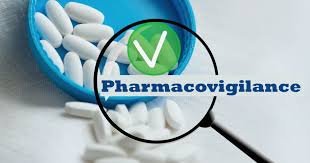Pharmacovigilance: An Introduction for Beginners

🧠 What Is Pharmacovigilance?
Pharmacovigilance (PV) is the science and activities aimed at detecting, assessing, understanding, and preventing adverse effects or any other drug‑related issues once a medicine is in use . The term originates from the Greek pharmakon (drug) and Latin vigilare (to watch), literally meaning “drug watch”
🎯 Why Is It Important?
-
Ensuring Patient Safety
Even after clinical trials, medications may cause rare, long‑term, or population‑specific issues that only emerge during widespread use -
Enhancing Benefit–Risk Balance
PV continuously evaluates whether a drug’s therapeutic benefits outweigh its potential risks -
Complying with Regulations
Regulatory authorities (like FDA, EMA, CDSCO in India) require ongoing monitoring and reporting of adverse drug reactions (ADRs)
🧩 Core Functions of Pharmacovigilance
-
Adverse Event Reporting: Gathering information from healthcare professionals, patients, clinical trials, medical literature, and even media .
-
Signal Detection: Identifying patterns or new safety concerns through data analysis
-
Risk Assessment: Evaluating the seriousness, frequency, and causality of ADRs
-
Risk Management: Implementing measures like label updates, usage restrictions, or medicine withdrawal if necessary
-
Communication: Informing healthcare providers and the public about safety issues and safe medicine use practices
🌍 Who Is Involved?
-
Pharmaceutical Companies – Monitor and manage their drugs’ safety profile.
-
Regulatory Agencies – Like FDA, EMA, WHO’s UMC, and India’s CDSCO/PvPI
-
Healthcare Professionals – Doctors, pharmacists, nurses, and dentists report suspected ADRs
-
Patients and Public – Their firsthand reports also contribute crucial safety data.
⚙️ Why It Matters After Approval
Clinical trials have controlled conditions and limited participants. Once a drug is widely used, previously unseen side effects or interactions might surface For example, India’s Pharmacovigilance Programme (PvPI) detected carbamazepine-induced reactions in certain genetic populations that weren’t evident in trials elsewhere
✅ Summary for Beginners
| Concept | Explanation |
|---|---|
| Definition | Drug-watching system for safety after use. |
| Purpose | Ensure real-world safety and compliance. |
| Process | Collection → Detection → Assessment → Management → Communication |
| Stakeholders | Pharma, regulators, healthcare pros, and patients |
| Goal | Safer medicines, informed decisions, stronger public trust |
Pharmacovigilance is essential in safeguarding public health by ensuring that medications remain safe and effective. As a beginner, understanding these foundational concepts sets you up for deeper exploration into career paths like ADR reporting, risk management, signal detection, or regulatory affairs.
🎓 Discover one of the best Pharmaceutical Pharmacovigilance course available — click below to explore the course that’s shaping future Pharmacovigilance skills.

